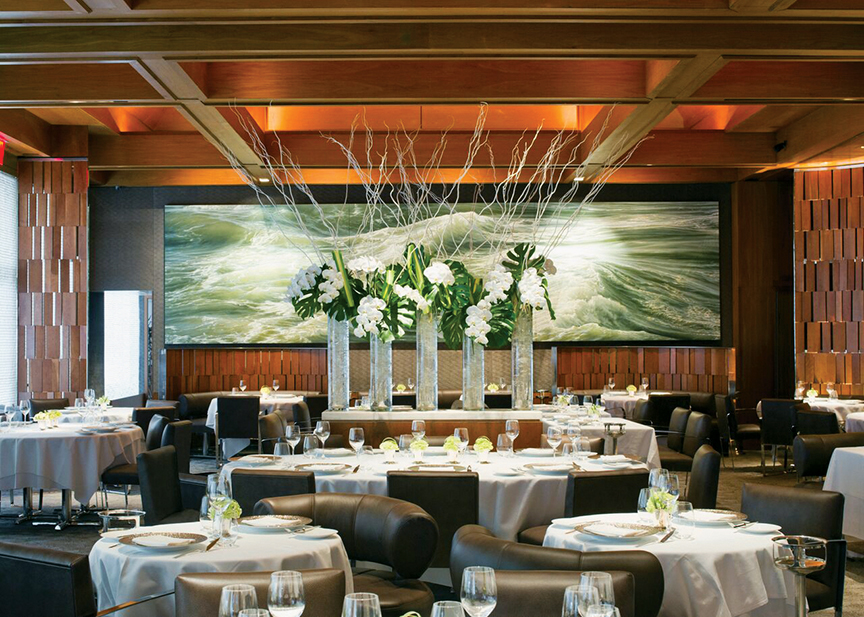
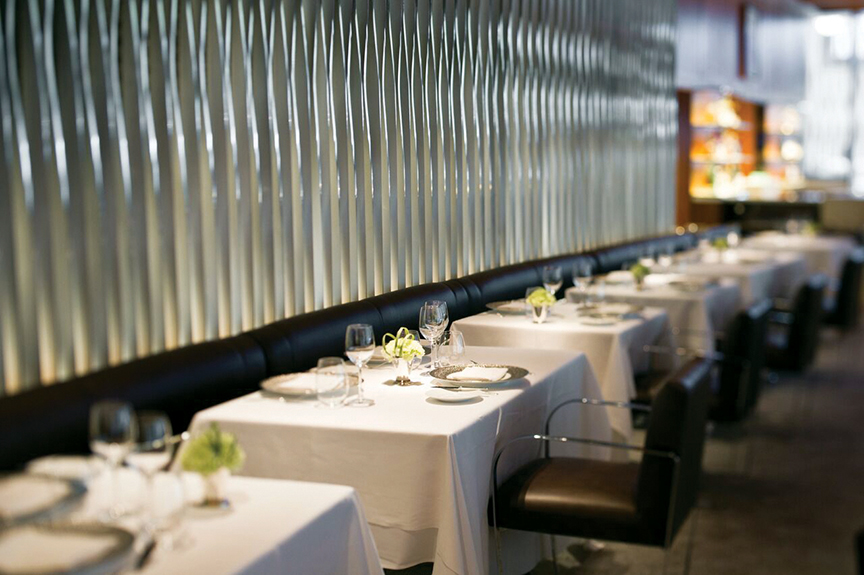
Photos courtesy of Le Bernadin
Overall, Americans are shunning haute cuisine, but for elite diners there remain plenty of opportunities for conspicuous consumption.
By Roger Grody
Generally, “fine dining” — typically evidenced by crisp white tablecloths, crystal stemware and formal service — is rapidly disappearing in America. However, for those restaurants that stubbornly adhere to tradition and insist on genuine luxury, the experience is elevated … along with the price.
Charlie Trotter, the renowned Chicago chef who died in his prime, insisted that fine dining actually represents good value, citing the superb ingredients and intensive labor (100 people from farmers to servers) that contribute to a world-class meal. Average Americans cannot afford mansions or yachts, but many can occasionally experience the world’s finest cuisine. The restaurants featured herein honor Trotter’s philosophy, with some pushing his principle to its limits.
Le Bernardin is one of New York’s temples of gastronomy, where chef/partner Éric Ripert has earned acclaim for fresh, seasonable seafood enhanced through sophisticated French technique. With options between $170 and $225 per person, the prix fixe menus at Le Bernardin are actually restrained for a Michelin three-star restaurant, but a couple can drop a bundle once caviar and wine are added.
“Luxurious service no longer equates to the stiff environment with formulaic interactions that was once popular,” reports Ripert, and while Le Bernardin has pioneered a more approachable experience, the chef/restaurateur still values tradition. “We continue to be a destination for special occasions, which is a large part of why we uphold some of our more classical dining requirements, such as gentleman wearing jackets,” he says. Allowing guests to visit the kitchen and take photographs with staff might not have been something his mentor Joël Robuchon would have encouraged decades ago, but Ripert views it as part of the evolution of fine dining.
While French cooking has the reputation for being the most expensive, it is Japanese cuisine — particularly the art of sushi — that is the priciest in America today. Discretely tucked into a diminutive space on Beverly Hills’ Rodeo Drive is Urasawa, whose entire seating is essentially comprised of just eight chairs at a sushi bar. There, for a flat fee of $425 per person (before tax, tip or a drop of sake), sushi chef Hiroyuki Urasawa personally pampers guests with an omakase (chef’s choice) meal in which extraordinary ingredients are matched by artistry on the plate.
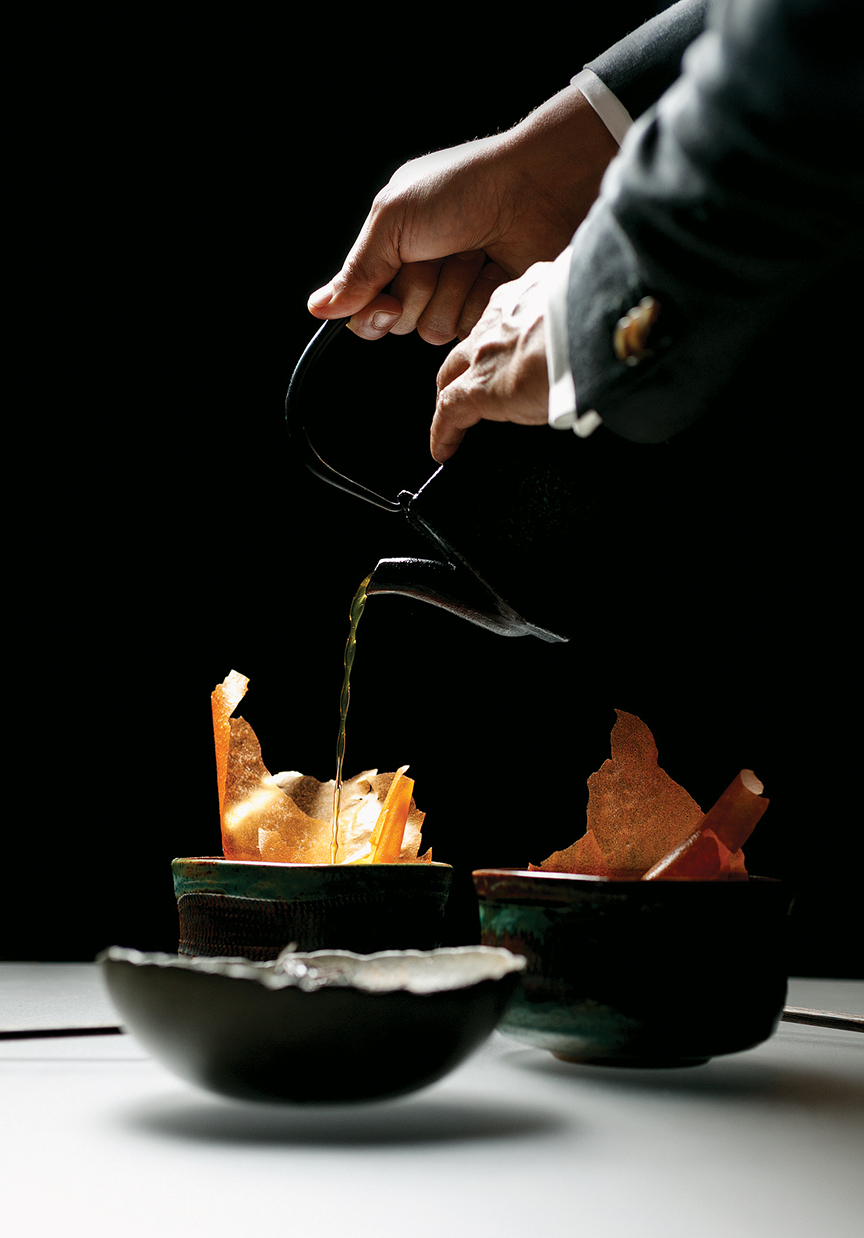

Photos by Allen Hemberger, interior by Matthew Gilson
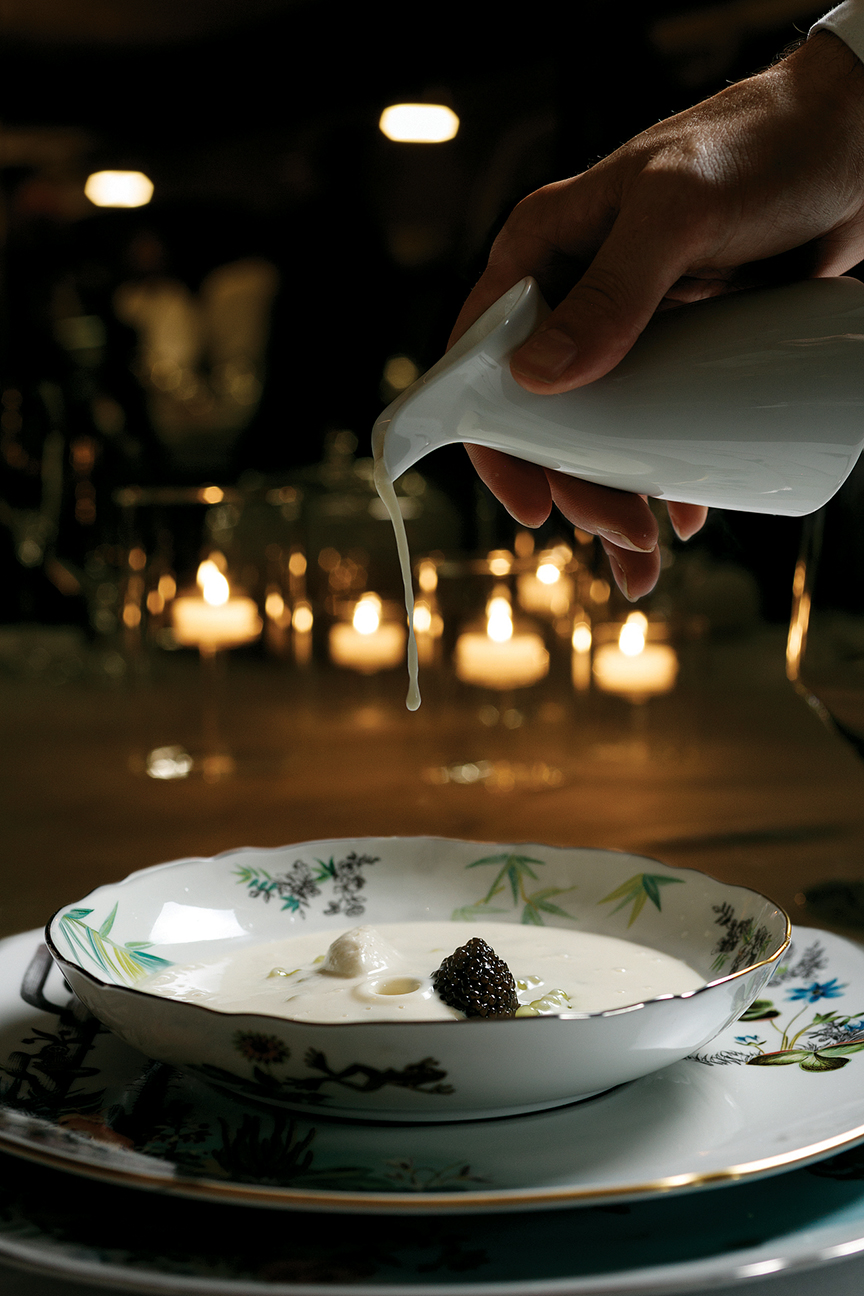
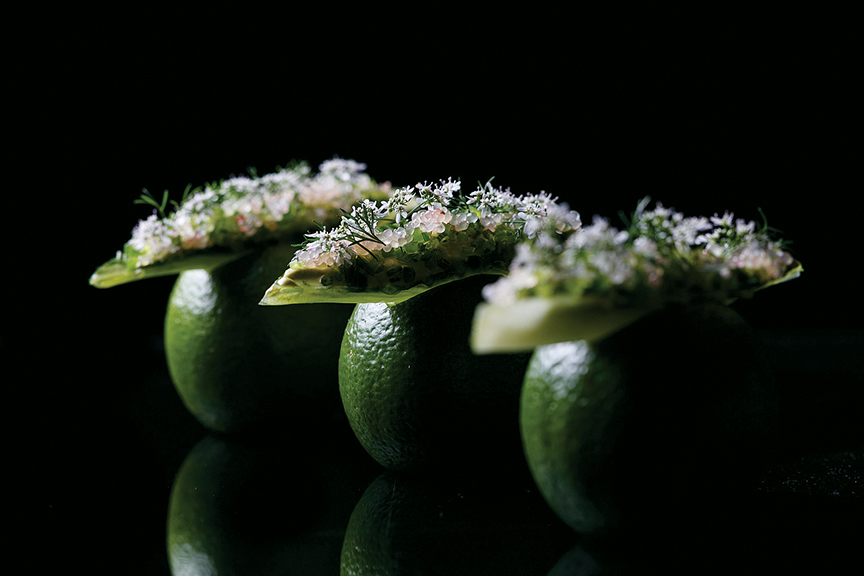
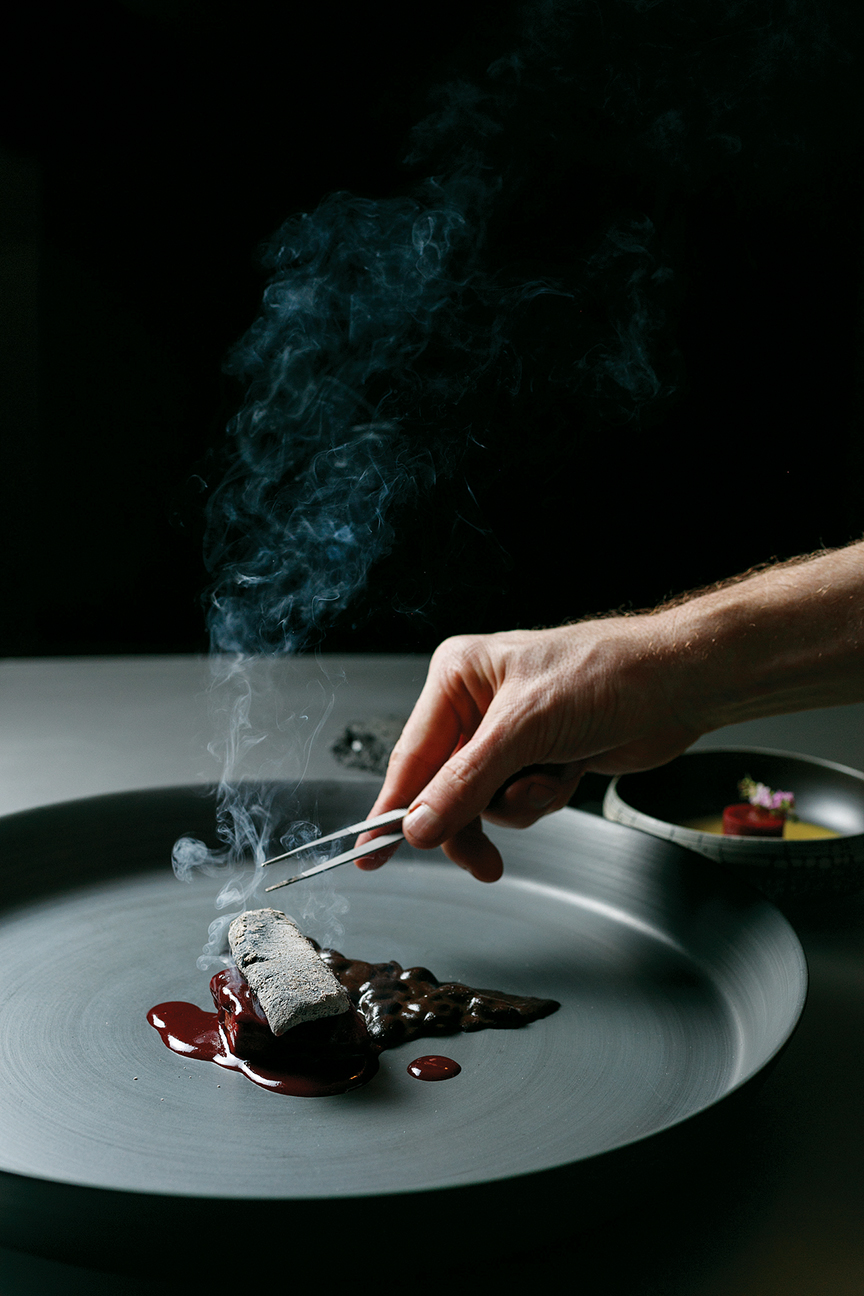
Urasawa-san is a protégé of sushi chef Masayoshi “Masa” Takayama, whose own restaurant previously occupied that same Beverly Hills space. When Takayama was lured to New York to open his 26-seat Masa at Time Warner Center, the prices went up and are now $595 per person, although gratuities are not accepted.
Masa’s sushi bar, a solid piece of hinoki (Japanese cypress), is sanded daily to create a luxurious tactile surface, while flowering branches of seasonal plants provide the only distraction from the master’s work behind the counter. A procession of glistening, edible jewels — the exquisite plating includes ample caviar, truffles and uni — comprise an unforgettable two dozen-course feast that most believe is worth the price.
Alinea, the renowned flagship of culinary innovator Grant Achatz, is sometimes mistakenly viewed as an elaborate stage for the chef/owner’s bag of molecular gastronomical tricks, but innovation alone does not earn three Michelin stars. While the interactivity and playfulness of the cuisine may turn off traditionalists who insist on the hushed formality of what typically passes for fine dining, the sophistication of Achatz’s ingredients, imagination and technique is undeniable. The price for this carefully choreographed presentation of culinary and performance art can reach $385 per person, prior to making a wine selection.
While acknowledging the “absurdity” of paying so much for a meal, Jeff Ruby, chief dining critic at Chicago magazine, insists the Alinea experience is a sound investment. “Someday, Alinea will be gone, and people will speak of it with awe, and its legend will grow,” he says. “Like people who brag that they saw Michael Jordan play in his prime, you can say you ate at Alinea. That is worth way more than $385 to me.”
Ruby believes even traditionalists can find pleasure with Achatz’s concept, as long as they go with an open mind. “People walk in with a chip on their shoulders and Alinea knocks the chip off and turns it into some kind of dehydrated truffle orb,” quips Ruby, insisting Achatz and his crew deliver on their promise night after night.
Located in a posh hotel 20 miles north of downtown San Diego is Addison, where 22-karat gold-trimmed doors open into a soaring foyer while four limestone fireplaces warm the classically inspired premises. In the kitchen, Executive Chef William Bradley prepares a contemporary French cuisine while $10,000-plus treasures are stocked in the wine cellar. Although the chef’s 10-course tasting menu is a relatively manageable $250, Addison recently hosted a Krug Champagne dinner that at $1,000 per head is extravagant by any standard.
“At Addison, every element is fine-tuned through the lens of creating the best and most memorable dining experience possible for our guests from the moment they walk through the door,” reports Bradley. Noting that many diners are celebrating special occasions or have traveled a great distance, he adds that small details (e.g. generously spaced tables, stools for ladies’ purses) are the foundation of the guest experience.
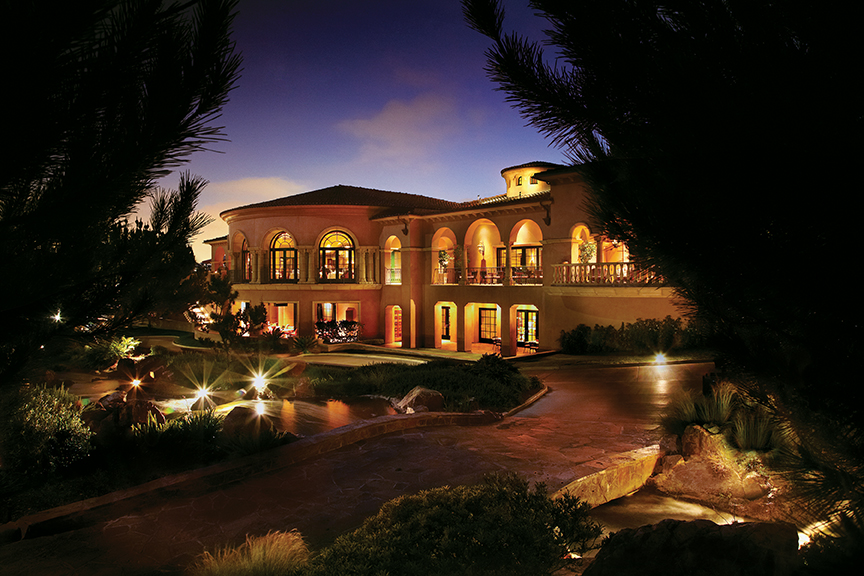
Photos courtesy of Tory Kooyman and Jakob N. Layman
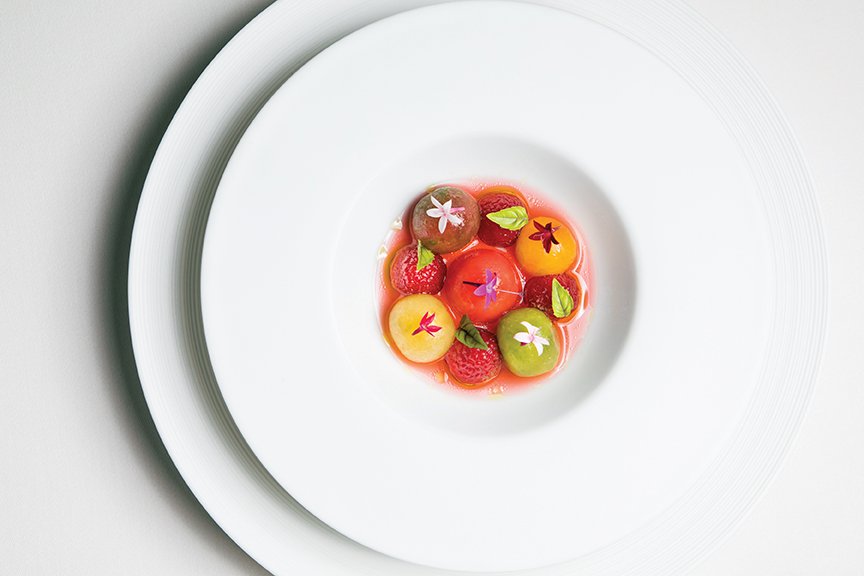
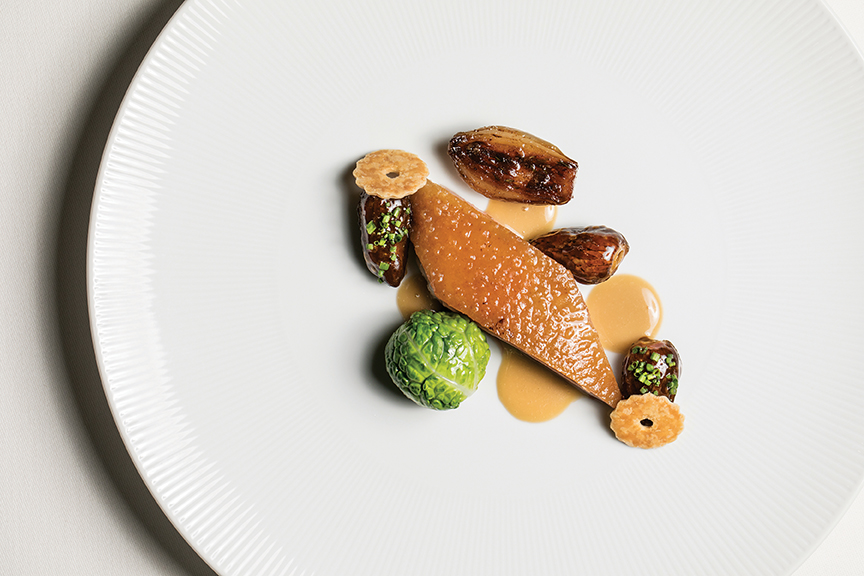
“Hospitality is timeless, as is the desire to be transported,” says Bradley, noting that the dining experience at Addison — it is tucked away in the hills above Del Mar — echoes its physical separation from metropolitan San Diego or L.A. “In an era where we’re so connected to technology, it’s more important than ever to maintain fine dining traditions that separate our guests from the stress of their daily routines,” suggests the chef.
Addison’s bar is currently dispensing a $250 cocktail called the Corpse Reviver XIII, a reimagination of a classic libation with roots in the 19th century. This gold dust-embellished version contains Adrien Camut Rareté (a Calvados so rare only 10 bottles are allocated to the U.S. annually) and 40-year-aged Rémy Martin Louis XIII Cognac. With its price equivalent to the tasting menu, this is clearly an indulgence worth lingering over.
In San Francisco, Saison ranks as the most exclusive and expensive restaurant in town, where exquisitely presented contemporary American fare is served in a space where the boundaries between dining room and kitchen are all but erased. A procession of nearly 20 small courses, which changes daily and can be tailored to the preferences of individual diners, carries a tariff of $398 —before even exploring Saison’s world-class wine list.
In Las Vegas, where winners and losers alike are as predisposed to consume opulent cuisine as they are to purchase Louis Vuitton bags, every major hotel has at least one ultra-high-end dining room. At Caesar’s Palace it is the eponymous restaurant of Guy Savoy, one of Paris’ Michelin three-star stalwarts, where the “Prestige Tasting Menu” runs $385 per person and premium wine pairings add another $375.
At Twist, a celebrated dining venue at the Mandarin Oriental Las Vegas, Chef Pierre Gagnaire (another giant of the Parisian dining scene) presents what may be the luckiest menu on the city’s legendary Strip. A seven-course meal is paired with seven fine wines to comprise a memorable gastronomic experience, and hopefully its $777 per person investment can be recouped with some additional sevens in a nearby casino.
At the Mandalay Bay’s Fleur in Las Vegas, even the ultimate comfort food can inflict extensive damage to one’s budget. There, chef/owner Hubert Keller applies the city’s legendary glam to the humble hamburger, layering foie gras and truffles over a wagyu beef patty. It arrives with a bottle of 1995 Château Pétrus, one of the world’s most treasured wines, followed by a $5,000 tab.
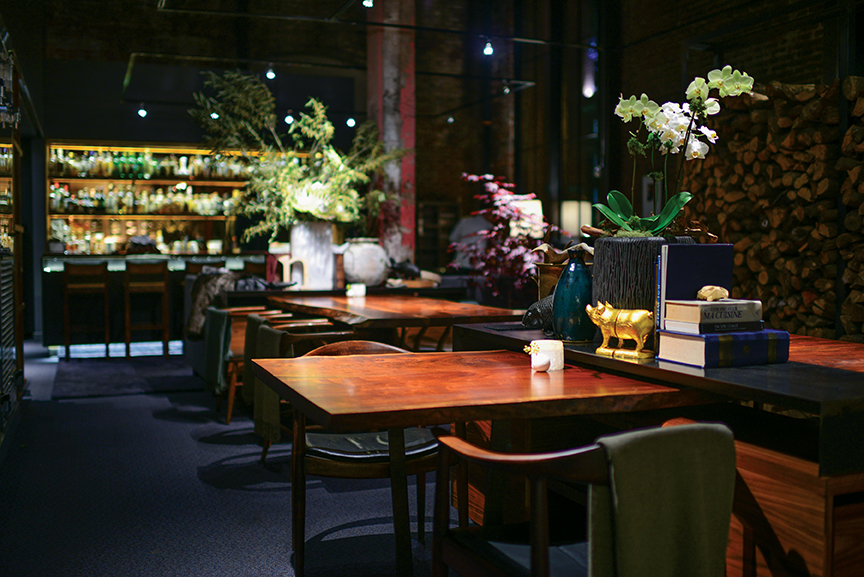
Photos by Bonjwing Lee
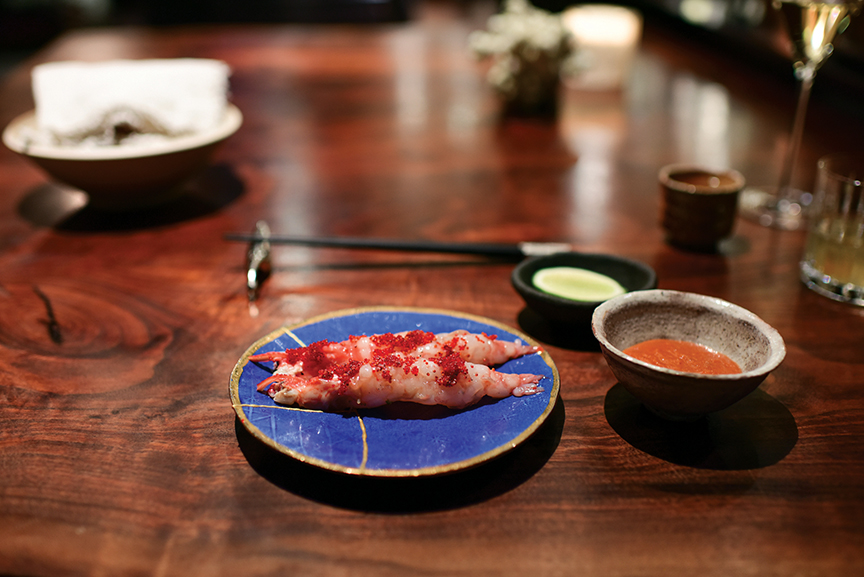
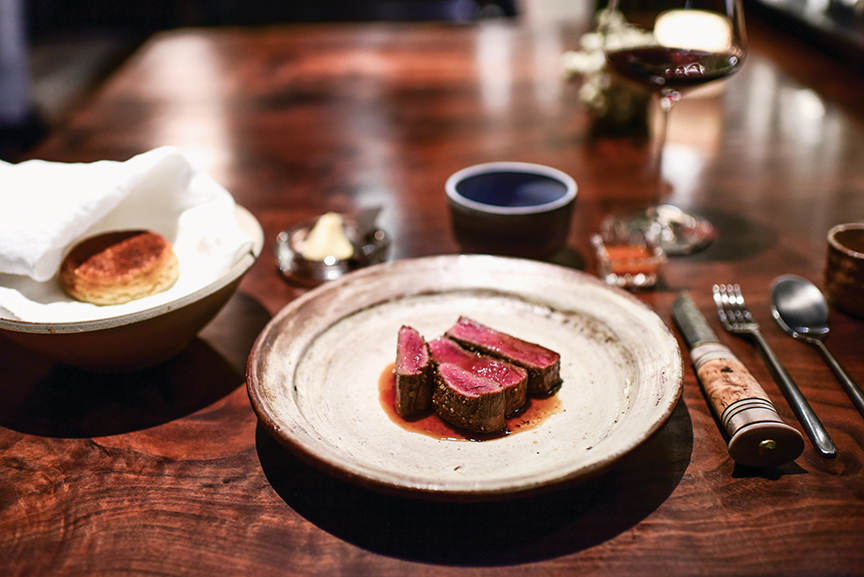
Addison • San Diego • www.addisondelmar.com
Alinea • Chicago • www.alinearestaurant.com
Fleur by Hubert Keller • Las Vegas • www.hubertkeller.com
Restaurant Guy Savoy • Las Vegas • www.caesars.com
Le Bernardin • New York • www.le-bernardin.com
Masa • New York • www.masanyc.com
Saison • San Francisco • www.saisonsf.com
Twist • Las Vegas • www.mandarinoriental.com/las-vegas
Urasawa • Beverly Hills • http://urasawa.cafe-inspector.com
Innovative pastry chefs around the world are presenting cutting-edge creations while respecting centuries-old traditions.
Most celebrity chefs specialize in savory courses while those who master sweets — the very dishes that put an exclamation point on any memorable meal — toil in relative obscurity. Culinary professionals, however, concede that desserts are at least as demanding and complex, requiring a greater appreciation of science and precision, not to mention artistic flair.
Paris is filled with extraordinary restaurants and pâtisseries, but Pierre Hermé may be the City of Light’s leading innovator of sweets.
Long before classic Parisian macarons (delicate meringue sandwich cookies not to be confused with American macaroons) began drawing attention worldwide, Hermé was revolutionizing the confection from his Paris studio. His audacious approach has become so trendsetting that seasonal releases of his new flavors are as anxiously awaited as the lines of haute couture turned out by the city’s fashion designers.
Anise and saffron, chocolate and foie gras, caviar and walnut. These brazen yet balanced flavor combinations represent the imaginative macarons dispensed at Hermé’s jewel box-like stores, which have spread throughout Europe, the Middle East and Asia. Monsieur Hermé’s magic also extends to cakes and tarts such as his “Ultime,” a sleek, seductive disk of Belizean dark chocolate cream and Madagascan vanilla ganache.
Pierre Hermé’s macarons may be the most elegant take-out snacks in Paris, but extraordinary plated desserts are found at the city’s Hôtel Plaza Athénée. Maintaining the property’s world-class culinary standards — it is home to an Alain Ducasse restaurant earning three Michelin stars — is Angelo Musa, a world pastry champion and recipient of the coveted Meilleur Ouvrier de France.

“I’m inspired by the changing seasons, with each turn I discover and rediscover unique flavors,” says Musa. His creations are sophisticated, but the chef has a restrained approach to presentation. “I don’t favor art at the expense of taste,” says Musa of a philosophy he has maintained throughout his career. “Finding the balance between tastes and textures allows staging to be more harmonious and attractive, and when the taste transmits a sensibility far beyond the visual, the aestheticism offers an immediate emotion,” he explains.
Nearby, on the other side of Place de la Concorde, is Paris’ Le Meurice, a lavish hotel dressed in gilt, crystal and silk. Cédric Grolet, the property’s 32-year-old pastry chef, was named “Best Restaurant Pastry Chef in the World” (2017) by Les Grandes Tables du Monde, as well as “Best Pastry Chef” (2018) by France’s influential Gault Millau guide. His desserts at the hotel’s magnificent dining room, Le Meurice, and pastries for afternoon tea at Restaurant Le Dalí have generated considerable buzz.

Cédric Grolet

Rubik’s Cube
While a serious artist, Grolet indulges his playful side in fanciful yet elegant pastries that resonate with customers. He is renowned for his fruit sculptures, confections so realistic they mirror their inspirations with incredible precision, and his interpretation of a Rubik’s Cube, a dazzling cake sculpture consisting of 27 ganache- and gilt-clad petit fours.
“The colors, as well as the textures and decorations, are from nature,” says Grolet of the Cube, who adds for emphasis, “This is essential.” Like Musa, Grolet’s menu is dictated by seasonality and he regularly tastes the savory dishes to ensure his finales are complementary. “This means taking into consideration the weather, having a dash of boldness and adding last-minute touches,” he explains.

Johannes Bonin

Mascarpone Cheesecake
Although innovators, Musa and Grolet are classicists at heart, while Oriol Balaguer experiments with molecular gastronomy to perfect pastries and chocolates showcased at his high-end boutiques in Barcelona and Madrid. Earning an award as “Best Dessert in the World” is a glossy study in chocolate in which Balaguer presents eight distinct textures of the sexy ingredient.
At his eponymous pâtisseries in Tokyo and Paris, Sadaharu Aoki applies classic French pastry technique to traditional Japanese ingredients, resulting in matcha (green tea) napoleons, black sesame éclairs or macarons infused with wasabi or yuzu. Aoki’s sophisticated aesthetics, displayed in both his cross-cultural desserts and sleek boutique interiors, play equally well in Japan and France.

Thomas Raquel

APPLE Brown Butter Mousse
The Japanese-born Aoki mastered his craft in Paris, but the city’s claim to being the epicenter of pastry art is being challenged as French-trained chefs scatter across the globe. At Dubai’s Burj Al Arab Jumeirah, the iconic sail-shaped structure that has been called “the world’s first seven-star hotel,” French-born Johannes Bonin turns out edible art for well-heeled guests.
“As a global culinary hub and home to diverse nationalities, the Middle East inspires chefs to put their creative skills to the test by making the most of local ingredients,” reports Bonin. Explaining his personal approach, he states, “I choose a premium-quality product, then add just one or two flavors to complement that main ingredient and give it an original twist.” At Burj Al Arab, Bonin deviates from his own French traditions, creating desserts that are fun, less sweet and relatively healthy. He believes presentation should be secondary to taste, but recognizes its power in the age of Instagram and applies his share of gold leaf at a hotel renowned for luxury.
At New York’s Le Bernardin, America’s most honored seafood restaurant, 31-year-old executive pastry chef Thomas Raquel is challenged with maintaining the perfection of preceding courses from celebrity chef/co-owner Eric Ripert, whose cuisine has earned three Michelin stars. Each of Ripert’s dishes tend to showcase one primary ingredient, and Raquel is similarly focused. “A single ingredient or classic dessert is the star on the plate, then I add my own twist — whether it’s in the presentation or an unexpected element — to elevate the ingredients and make the dish memorable and unique,” he explains.
Whether interpreting a classic Mont Blanc or reimagining a Black Forest cake, Raquel has a thoughtful approach to plating. “I always consider flavor first, then aim for a presentation that balances organic shapes and clean lines,” says the chef, who adds, “I want each plate to be both simple and unexpected…. I love when the plating of a dessert can offer guests a little surprise!”
With its salad-picking supermodels and an obsession with health, one would not expect Los Angeles to be promising territory for desserts. But The Peninsula Beverly Hills’ Stephanie Boswell is among a cadre of innovative young pastry chefs in her native city. At The Belvedere, the hotel’s fine dining venue, she is known for literally transforming desserts into works of art.

Mascarpone Cheesecake

Stephanie Boswell

Cassis Plum

Janice Wong
Boswell’s Fabergé eggs — chocolate shells hand-painted with floral designs and embellished with glitter — are exquisite presentations. “I wanted the egg to be this perfect, precious, austere thing that comes to your table and you have to smash it to eat it,” says the executive pastry chef of her edible performance art. Inside, pretenses are dropped in favor of nostalgic fillings like s’mores or Boswell’s upscale take on a PB&J sandwich. She also creates cream puffs emblazoned with pop art images from masters like Warhol, Lichtenstein or Robert Indiana, whose original work is on the wall.
“My work is greatly influenced by the world of art,” explains the chef, who as a kid spent every weekend at a different museum. “I heard the phrase, ‘DON’T TOUCH THAT!’ a lot and I think it made me want to create art that was made with the intention of being touched, messed with and changed by the viewer,” recounts Boswell. Ultimately, she recognized pastry was the perfect medium for that approach.
The traditions of East and West collide in Hong Kong, where chef Janice Wong — the native Singaporean was mentored by Hermé and Balaguer — applies classic technique to Asian ingredients at Cobo House. Wong creates the entire menu but reinforces her reputation as a pastry chef favoring avant-garde presentations. Inspired by the Japanese cherry blossom is a half-sphere of blackcurrant and white chocolate with a crater filled with pink foam created from red shiso leaf liqueur.
Dessert, anyone?
Photos courtesy of Georges Biard, Angelo Musa, Pierre Hermé, Thomas Dhellemmes, Pierre Monetta, Stu Williamson, Daniel Krieger, Ryan Forbes, Cobo House, Burj Al Arab, Le Bernardin, Peninsula Beverly Hills
Sweet Spots
Burj Al Arab Jumeirah
Dubai
www.burjalarab.com
Cobo House
Hong Kong
www.cobohouse.com
Le Bernardin
New York
www.le-bernardin.com
Le Meurice
Paris
www.dorchestercollection.com
Oriol Balaguer
Barcelona and Madrid
www.oriolbalaguer.com
The Peninsula
Beverly Hills
www.beverlyhills.peninsula.com
Pierre Hermé
Paris and elsewhere
www.pierreherme.com
Hôtel Plaza Athénée
Paris
www.dorchestercollection.com
Sadaharu Aoki
Tokyo and Paris
www.sadaharuaoki.com
A percentage of revenue from The Chef’s Table at BLACKBARN restaurant will go toward the Heavenly Harvest Foundation, a charity that creates nutritious and quality meals for those in need.
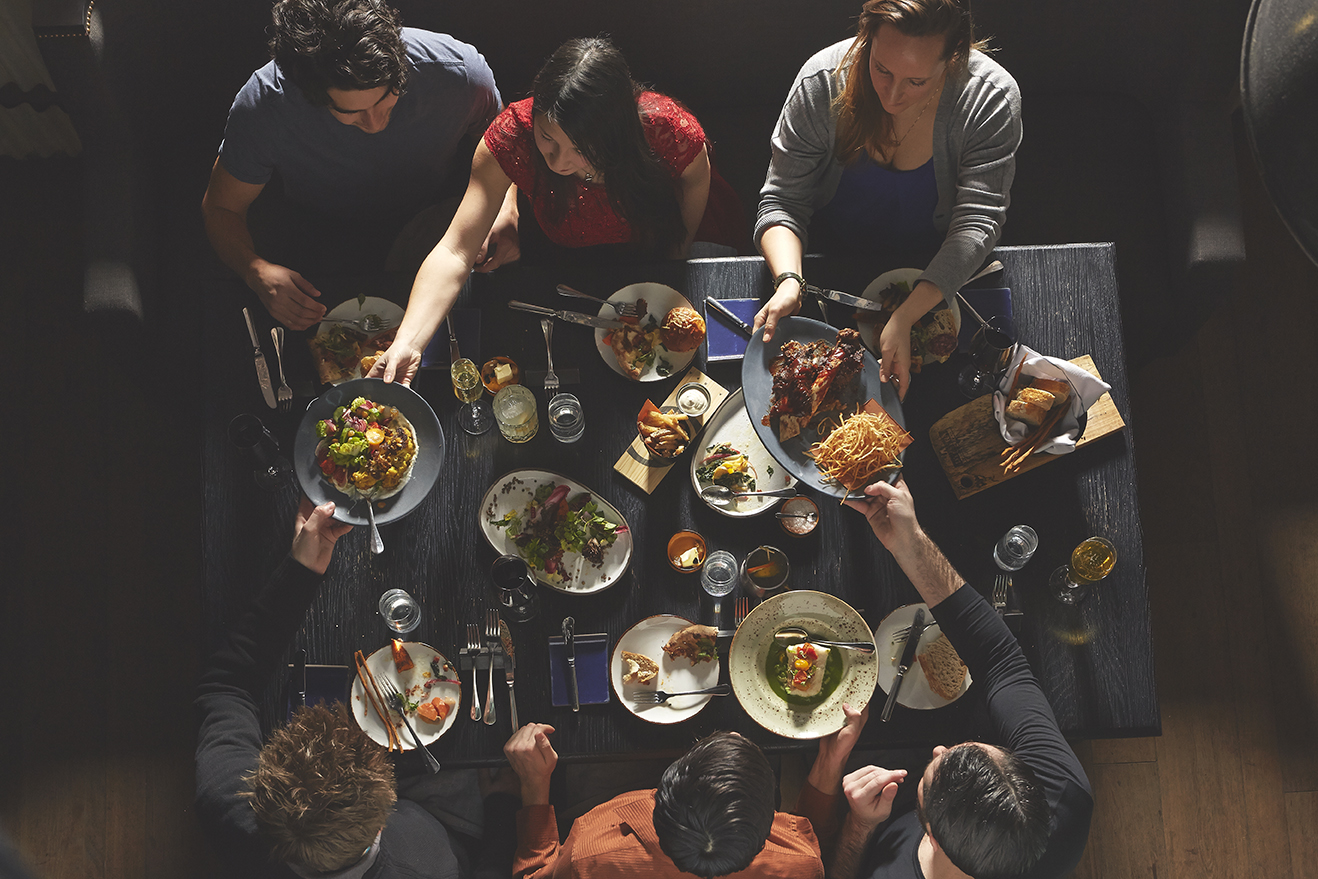
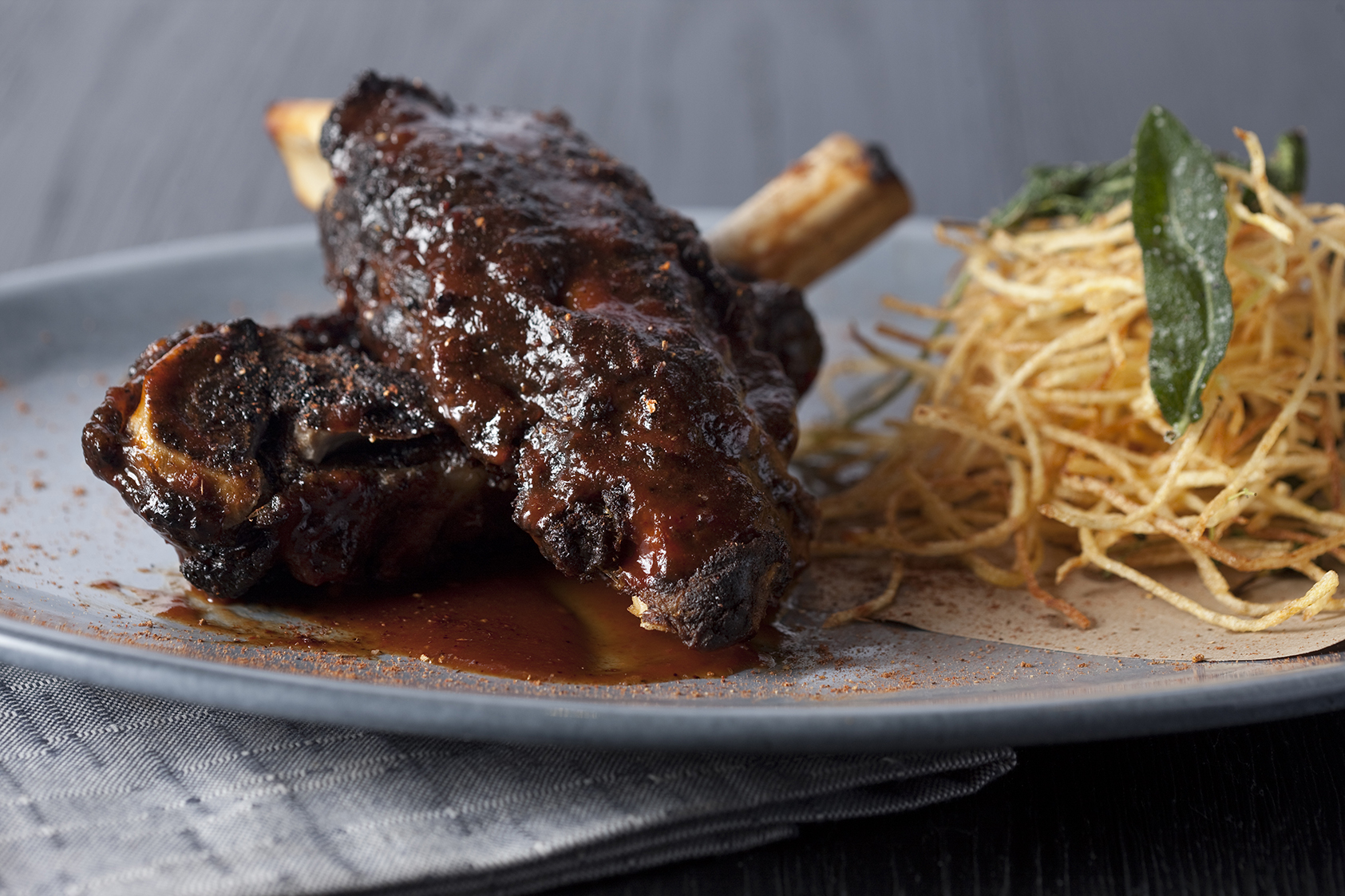
The Chef’s Table, open to the general public on Saturday nights, provides the opportunity to watch the restaurant’s renowned chef-owner John Doherty and his team in action and taste five distinct courses made from the season’s freshest ingredients. With a specially crafted menu that changes monthly, the $150 meal includes a selection of five wine pairings to present an affordable journey into New York City’s dining scene.
“We are thrilled to turn an evening out into an opportunity to give back for our guests, as proceeds from each dinner can provide a child in need with nutritious meals for an entire week,” says Chef John Doherty. “Like every detail of the BLACKBARN experience, from the decor to the tableware, the fully curated dinner leaves an impression of comfort and luxury while now sharing our passion for philanthropy.”
A personal dining experience that invites guests to have a front-row view of the action at long tables overseeing the exposed kitchen, The Chef’s Table offers a performance that is as elegantly simple as the dishes Chef Doherty creates. The April menu featured flavorful and unique combinations like a rich and round foie gras terrine cut with a tangy rhubarb and ginger conserve, and seasonal stars like ramps, white asparagus, fennel, and figs.














